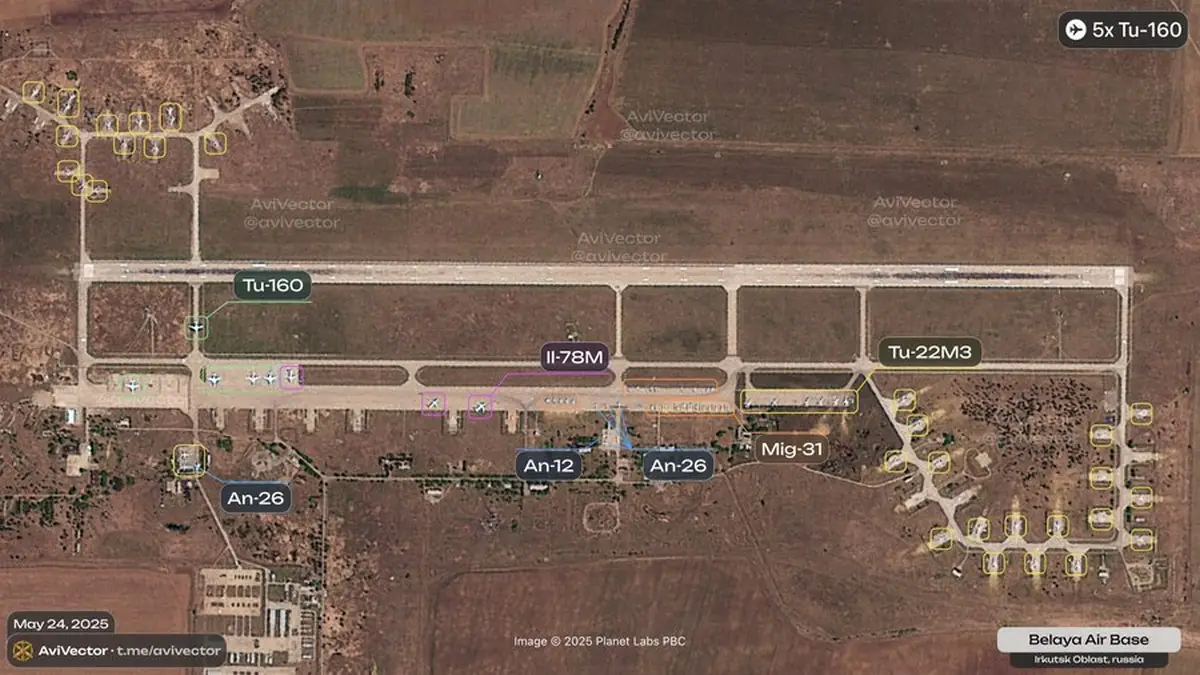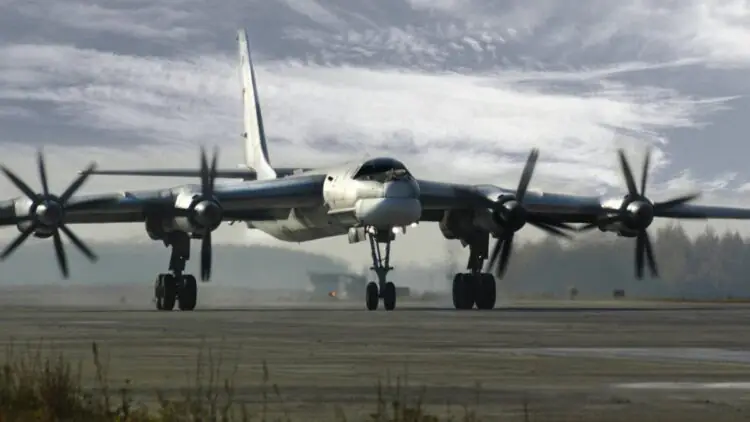Amid recent large-scale missile strikes on Ukraine, new satellite images indicate a significant redeployment of Russian strategic bombers. Analysts suggest this move could be aimed at concealing preparations for launches and confusing Western surveillance systems.
According to images released on May 26 by the open-source intelligence group AviVector, the Olenya airbase in Russia’s Murmansk region showed an unusually high concentration of strategic aircraft: 40 Tu-22M3 bombers, 11 Tu-95MS bombers, and five An-12 transport planes. Ukrainian defense outlet Defense Express reported on May 29 that the Tu-22M3 alone accounts for about two-thirds of Russia’s entire fleet of this bomber type.

This information contrasts with satellite images taken earlier in May, which showed 40 Tu-22M3 bombers stationed at the Belaya airbase in Siberia. According to Defense Express, Russia has no more than 60 operational Tu-22M3 bombers, suggesting that 40 of these aircraft recently relocated from Belaya to Olenya.
This kind of maneuver is unusual, especially considering Russia has significantly reduced the use of Tu-22M3 bombers for missile strikes in Ukraine compared to 2023 and early 2024. Aside from operational reasons, the most likely explanation is a show of force and an attempt to confuse intelligence efforts.

The presence of 11 Tu-95MS bombers at the Olenya airbase adds further complexity to the situation. Only three of these bombers were involved in the strike on Ukraine on May 26, indicating a relatively low level of combat readiness. Satellite images from the Engels airbase – another major Russian strategic bomber hub – provide additional context. As of May 25, Engels hosted six Tu-95MS bombers, three Tu-160 strategic bombers, and four Su-34 tactical bombers. The next day, these numbers decreased to three Tu-95MS, three Tu-160, and two Su-34 aircraft. Following the large missile attack on May 26, seven Tu-95MS bombers landed back at Engels, while one flew to Olenya.
This movement suggests a rotational deployment pattern, likely intended to complicate efforts by Ukrainian and Western intelligence to detect the buildup of missile strikes. However, such maneuvers come with drawbacks – Russian strategic aircraft, particularly the Tu-95MS and Tu-22M3, are reportedly operating close to the limits of their service life, and maintaining them remains a challenging task.

Defense Express analysts suggest that Russia is deliberately using its aviation resources for demonstrative relocations to complicate assessments of its combat activity and to confuse Western intelligence. This strategy appears aimed at maintaining pressure on Ukraine while simultaneously protecting its vulnerable air assets.
Source: United24media









